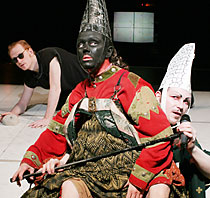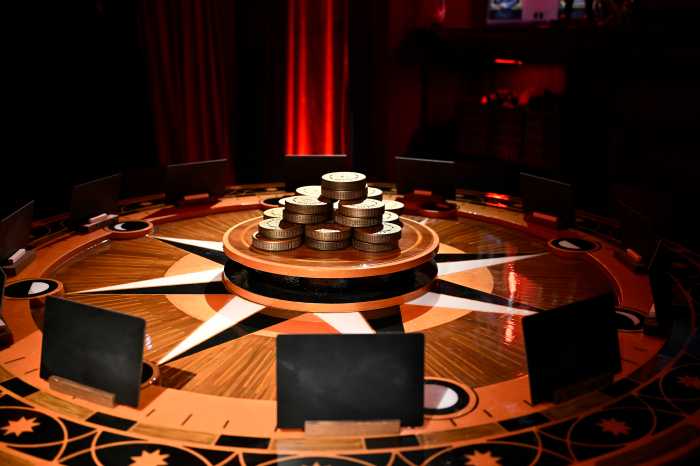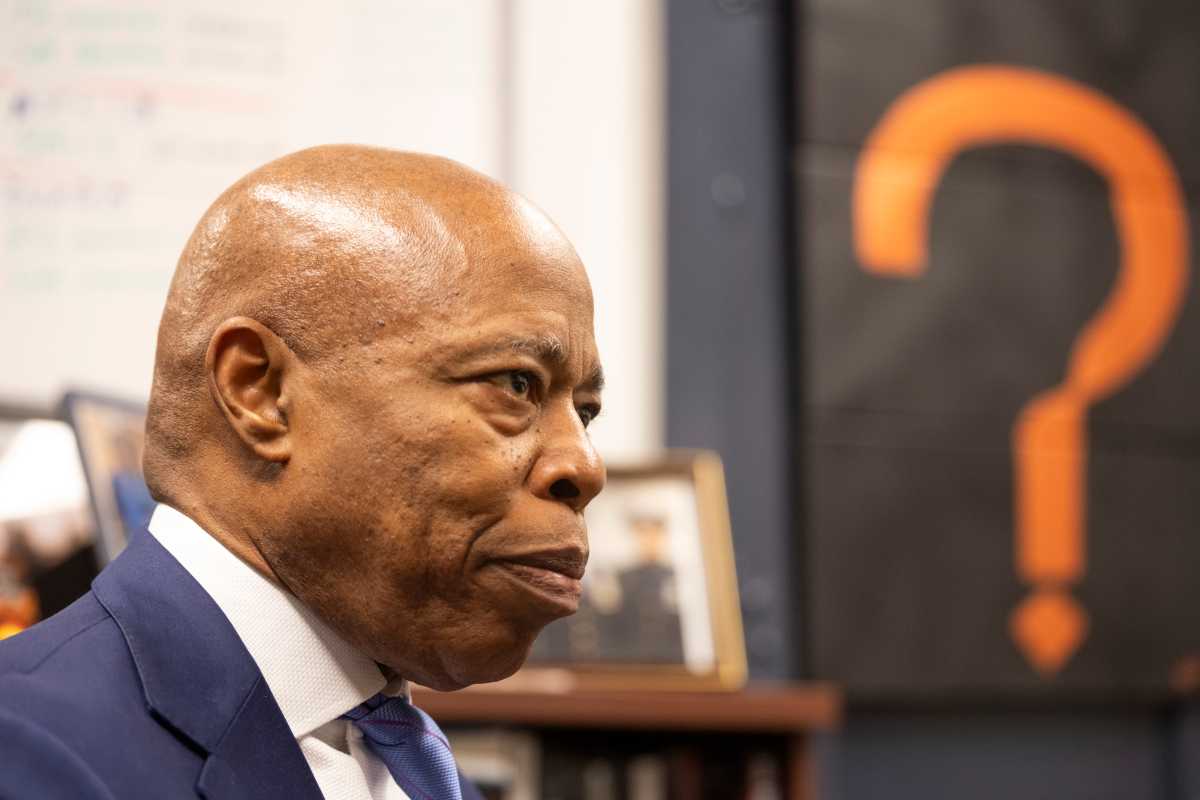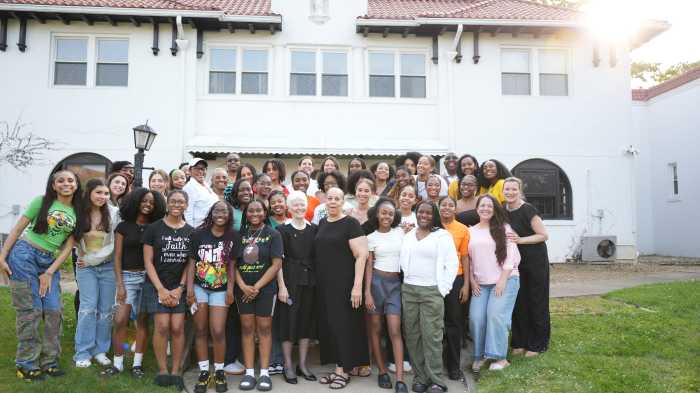If you think mounting a modern-day minstrel
show is flirting with disaster, you’re right. Although, in the
case of The Wooster Group’s blackface version of "The Emperor
Jones" (at St. Ann’s Warehouse in DUMBO through April 2),
the troublesomeness isn’t due to offensiveness or outrageousness
so much as ostentation.
There’s definitely a disarming logic informing Elizabeth LeCompte’s
directorial conceit. Written in an early form of Ebonics that
only a white man could conceive, this early Eugene O’Neill one-act
(circa 1920) skirts disturbing stereotypes even as it constantly
evades out-and-out racism. Civil rights activists and formidable
actors alike, Paul Robeson and Ossie Davis, both tackled the
tragic central role at certain points in their careers; here,
LeCompte chooses to go in the opposite direction by turning the
protagonist into a growling, groveling, eye-popping, teeth-flashing
Sambo.
O’Neill’s expressionist script is incredibly spare, almost skeletal.
It’s not a diatribe on race; it’s a metaphysical examination
of karmic retribution. Aside from a few minor characters at the
start and end of the play, "The Emperor Jones" is a
prolonged monologue in which an escaped convict confronts the
demons of his past – a slave auctioneer, the chain gang, a murdered
gambler, even his oppressed ancestry coming over on the slave
ships. That he’s simultaneously fleeing enraged islanders, weary
of his dictatorial reign, adds a sense of urgency to his hallucinations.
Never one to leave source material untouched, The Wooster Group
pares it down even further: The cast is now two actors (and a
stagehand who occasionally gets in on the action). The set is
a wheelchair, a pair of television monitors and two fake palms.
You’ll also find the company’s signature multi-media components,
but intended or not, the video montages of primitively altered
close-ups and abstract whirls of red, only further date the undertaking.
Indeed, the small monitors at the back of the stage act as unintended
references to the company’s genesis in the mid-1970s. The one
truly effective modernization is David Linton’s score, which
stylizes the crescendo of drumbeats that O’Neill requested into
a club-worthy layering of rhythms.
Using the transgressive art of minstrelry to reinterpret yet
another classic American text is in keeping with Wooster Group’s
30-year history: This intrepid, envelope-pushing ensemble has
always taken an aggressive, anarchistic approach when deconstructing
and appropriating masterpieces such as Arthur Miller’s "The
Crucible" (for their "L.S.D." in 1981), Gertrude
Stein’s "Doctor Faustus Lights the Lights" (for "House/Lights"
in 1996), and Thornton Wilder’s "Our Town" (which was
eventually sourced for part of "Route 1 & 9" in
1981), which also incorporated blackface. "The Emperor Jones,"
which reveals little dramaturgical tampering in comparison with
other Wooster Group projects and has been part of the company’s
rotating repertory of plays since 1992, is but the latest example
of how LeCompte and her cohorts revitalize familiar material
by forcing it to serve purposes contrary to those initially intended.
At least in theory.
In execution, the current staging feels like an old experiment
that’s lost all its potency. After the initial shock registers
and fades, there’s little elucidation and certainly no epiphany.
Which just goes to show you that sometimes yesterday’s breakthrough
is tomorrow’s anachronism. Kate Valk, dressed in Kabuki drag,
has been cast against type both in terms of gender and race;
she remains a daring actress as she engages in her initially
cringe-worthy mugging and incongruous – if diverting – modern
dance interludes.
But her performance quickly plateaus into a series of pre-set
gestures and affectations. You begin to wish that she was even
bolder, even broader, more over-the-top, more beyond-the-pale.
There’s nothing timid in her recreation to be sure, but there’s
also nothing intimidating about it either.
Far from horrifying or challenging the (nearly all-white) audience,
Valk mildly discomforts them, and then leaves them feeling self-congratulatory
at having politely sat through something avant-garde. Since there’s
nothing savagely satirical and since the style undermines the
narrative, what’s left is an extended sketch with a jarring punchline
that’s neither pointed nor provocative.
Today, you look at the work of young companies like Big Art Group
or The Neutrino Projects – two contemporary troupes which blur
the lines between film and theater in fascinating ways – and
you realize that while The Wooster Group was a pioneer for interdisciplinary
stagecraft, they’re not pioneers in that sense anymore. What
was once novel has become codified; they’ve got a set theatrical
vocabulary that’s as entrenched as that of the Berliner Ensemble
or the Comedie Francaise. When it works, you’re aware of a one-of-a-kind
vision that helped to redefine the parameters of theater. When
it doesn’t, what comes to mind is the Emperor’s clothes.
The Wooster Group’s production of "The Emperor Jones"
runs through April 2, Wednesday through Sunday at 8 pm, at St.
Ann’s Warehouse (38 Water St., between Main and Front streets,
in DUMBO). Tickets are $25-$37.50. For reservations, call (718)
254-8779. For more information, visit www.artsatstanns.org.

























